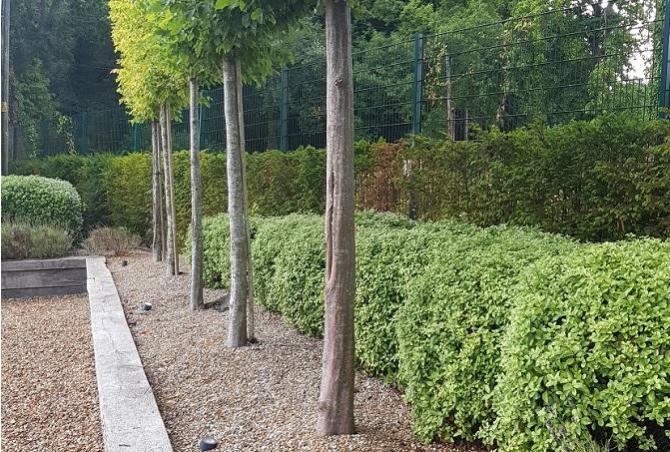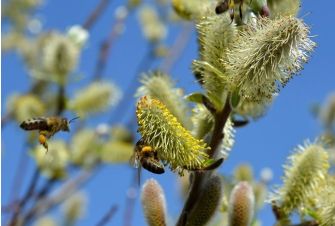Can trees and shrubs survive dry soil and rising temperatures?
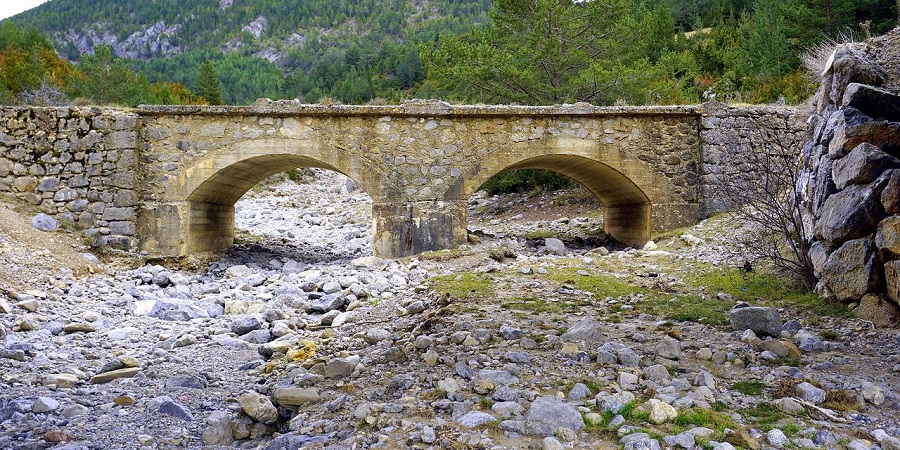
All garden-loving folk will know that the exceptionally dry weather during summer 2022 had a hugely negative impact on most gardens, parks and outdoor green spaces. Those trying to nurture young plants were particularly concerned about the long-term health and success of their newly planted stock. With the restrictions placed on watering, only those people who were able to provide hydration on a regular basis managed to safeguard their trees and shrubs. Even then, many species suffered a certain amount of stress caused by hot sun. Warm temperatures lead to higher transpiration rates as plants attempt to maintain optimum heat levels. Their leaves actually become thinner as they lose water through the pores, then plump up again when temperatures fall during the night. It is important, therefore, that trees can replenish their water supplies in order to maintain their ability to cool down. But when humidity inevitably rises, a film of water can condense on and around the leaves. This creates an environment which is ideal for pathogens, which can attack the plant.
The alarm bells for climate change have been sounding for many years, but it is only now that people are really beginning to understand the effects it could have on everyday life and the appearance of the natural world around us.
How to help your garden plants through dry weather events
Let's all remember that people and plants are adaptable! We need to adopt an approach that allows for unusual events, as it's clear to see they are no longer 'once in a lifetime' occurrences. When it comes to lack of water, there is a fairly simple step that everyone can take to minimise stress for all plants (and gardeners), not just the new ones. Mulching is magic!
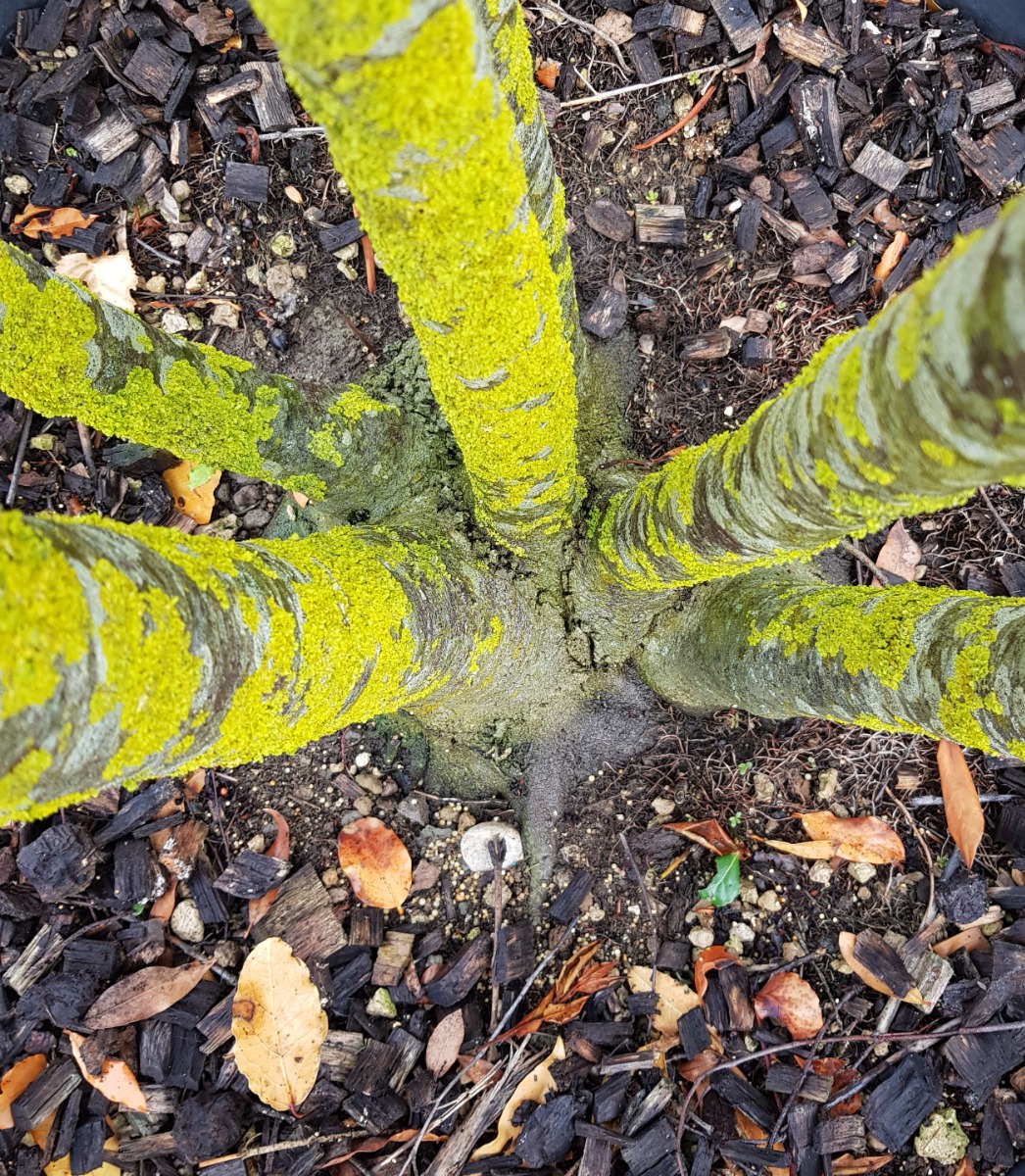
It means, simply, placing a fairly thick layer of material on top of the soil, around plants (but keep this away from the actual stems). Organic mulch is the very best. it will help to retain moisture in the soil and will encourage organisms beneath to travel upwards in order to feed, before returning below. Mulch creates fungal activity which is entirely natural within a woodland, thus keeping things balanced within the soil. It locks in moisture and also suppresses weeds. What's more, a mulch will provide root protection from drying winds and hot sun. An organic mulch will also act in a similar way to a plant feed as it slowly releases nutrients into the soil. It encourages worms, which are a gardener's friend. They work their way up into a mulch in order to feed, then take some of those nutrients down into the soil, improving the structure of the soil as they do so.
Mulch warning - be aware
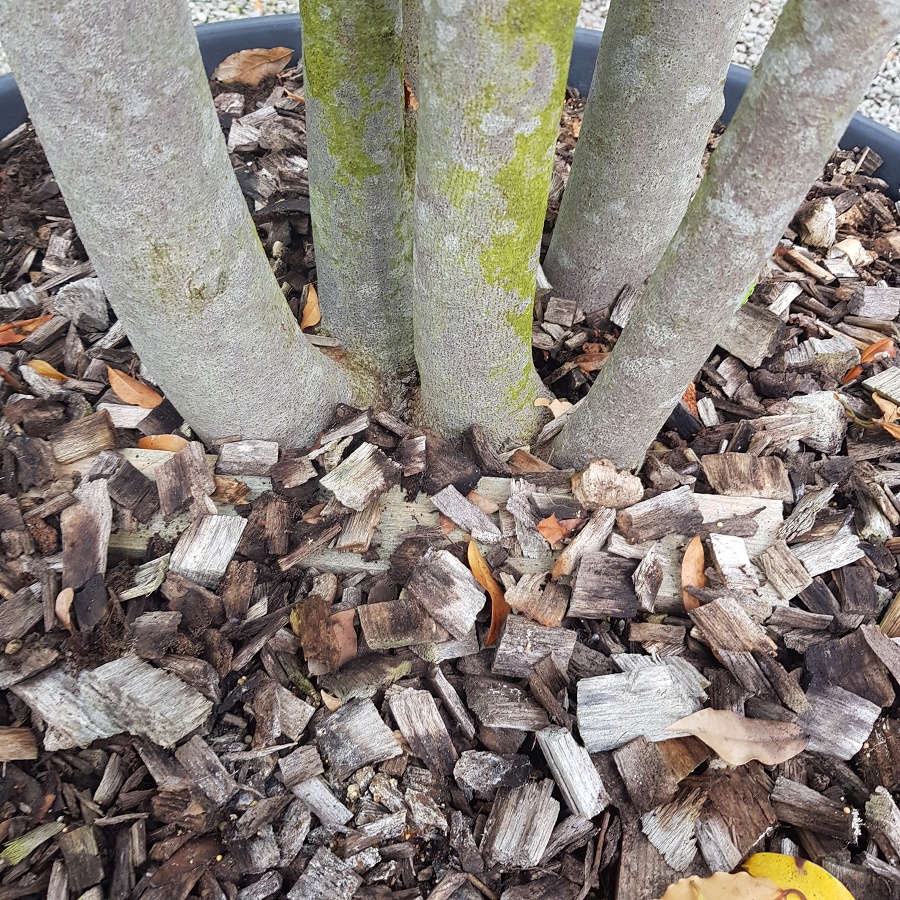
The photo above shows a good bark chipping mulch, but there is a problem with it. The mulch needs to be moved away from the stems because they can be softened by material resting against them in this way.
- It is best to attempt to mimic nature, as far as possible and a woodland floor is the aspiration. Mulches of a different nature can be better than nothing at all, but natural materials are best.
- A layer of bark, home-made compost or even natural, porous gravel, is far better than plastic, concrete, paving slabs or coloured rocks. Some of these can actually prevent water and oxygen from reaching the plant roots and risk reflecting heat and light up into the canopy, which can result in scorch.
- Wood chips are a popular choice, but it's important to be aware that these can affect nitrogen levels in the soil, depleting levels just under the surface. However, down a little further, the nitrogen levels are likely to be slightly raised. This is because micro-organisms use up nitrogen in order to decompose the wood chips. It might be detrimental to annuals and perennials that have roots close to the surface. But most trees with deeper roots will benefit because they will reap the rewards once the wood chips decompose, thus adding nutrients back into the soil.
- It is always best to compost your mulch material before using it on your beds. This will kill off any weed seeds and will also give residues of herbicides time to disappear.
- The amount of mulch to apply is also important. Just four to six centimetres is perfect. Don't allow it to touch the trunk of your tree, and spread it up to a metre diameter. Remember to top up the levels each year as it decomposes.
- Don't be tempted to put too much on, as this can prevent oxygen from reaching the plant roots.
- Always think of nature and try to mimic what happens naturally within a woodland.
When to apply mulch?
If the soil is dry, it's too late to apply mulch. The best time is late autumn, during mild spells in winter, or early spring. Always ensure that the soil is damp, but not frozen. You want to trap in the moisture rather than keep out the rain.

